





The Surrealism Website
Kurt Seligmann (1900-1962)
 Swiss born Kurt Seligman began painting in the late 1920s. His initial style was abstract, often using flowing organic shapes. In 1937 he met with Breton and became a member of the Surrealist group.
Swiss born Kurt Seligman began painting in the late 1920s. His initial style was abstract, often using flowing organic shapes. In 1937 he met with Breton and became a member of the Surrealist group.
Among his ealiest surrealist pieces must be the etching Legible Handwriting of 1938. Seligmann was a master etcher and produced many hundreds of etchings throughout his life.
A year or so later he created one of his first surrealist paintings The Meeting of the Elements. This reflected his deep interest in alchemy. Here we see the elements of Air and Water on the right, meeting with Fire and Earth on the left.
He liked to depict the human figure using abstract forms, as in Noctambulation of 1942, which to some extent borrows from Picasso.
He develops this pictorial language further through the 1940s as we see in a similar painting from 1944, Acteon.
His painting of 1948, the Sorceress appears to show a shop or stall on the left with shelves bearing flasks and distilling apparatus, continuing his interest in alchemy. A number of figures are approaching the sorceress no doubt seeking some magical potions.
Seligmann's painting The game of chance from a year later, again has a clear narrative. 1943 Breton expelled Seligmann from the Surrealist movement apparently after correcting him publicly on a matter of a tarot reading, but it obviously did not affect Seligmann. Indeed the late 1940's through into the 50s see him at the height of his creativity.
In 1948 his well known popular book on esoteric ideas The History of Magic was published.
Seligmann had always had an interest in alchemy and in 1955 created The alchemy of painting. It seems likely that he came to view painting as a kind of alchemical transformation of pigments and paint. He was also very drawn to etching which used numerous chemicals and acids to create the plates. A few years earlier he had created the Alchemists Muse in somewhat the same style and in 1949 he made a painting two showing two surrealist alchemists in their laboratory working with their flasks.
His final works return to a more abstract way of handing the human form, as in 'Balcony III' of 1958, with its three almost insect like human forms.
Seligmann was not just a painter but produced many surrealist etchings. He created a number of series illustrating books such as The Heraldic Vagrancies by Pierre Courthion. Another series was the Myth of Orpheus.
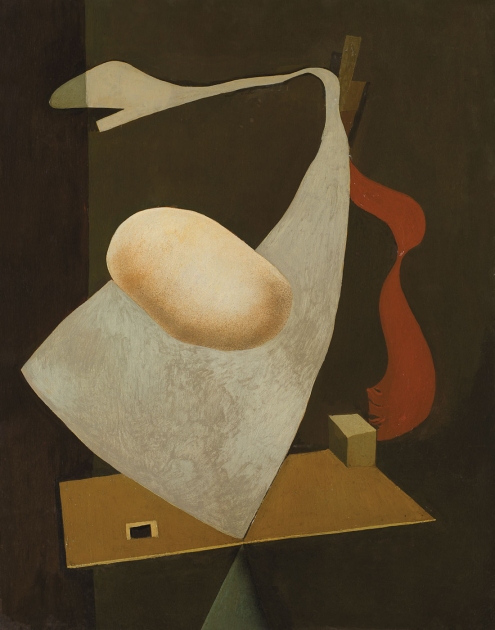
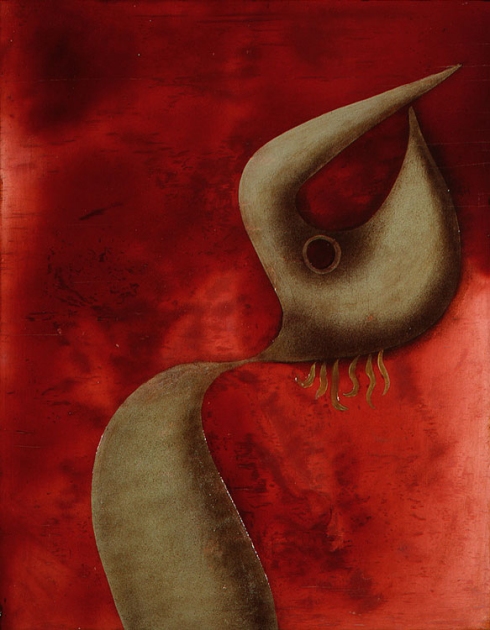
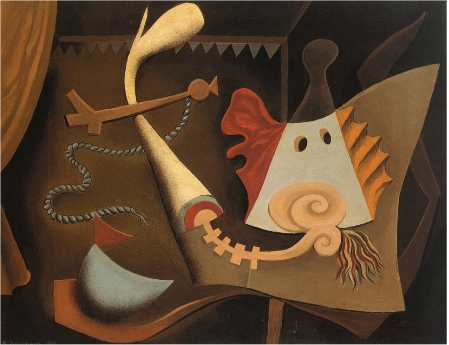

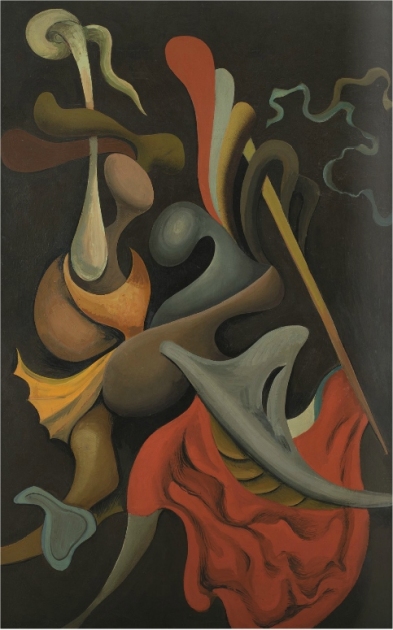

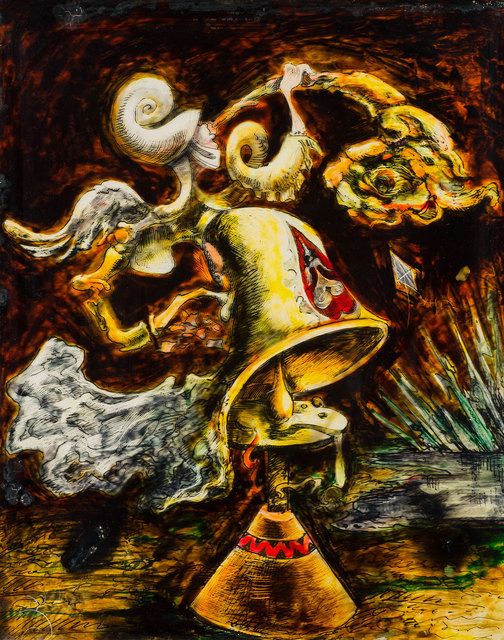
.jpeg)
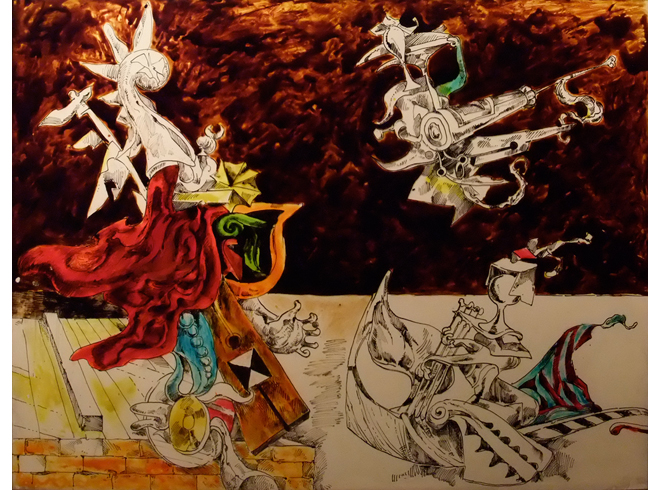
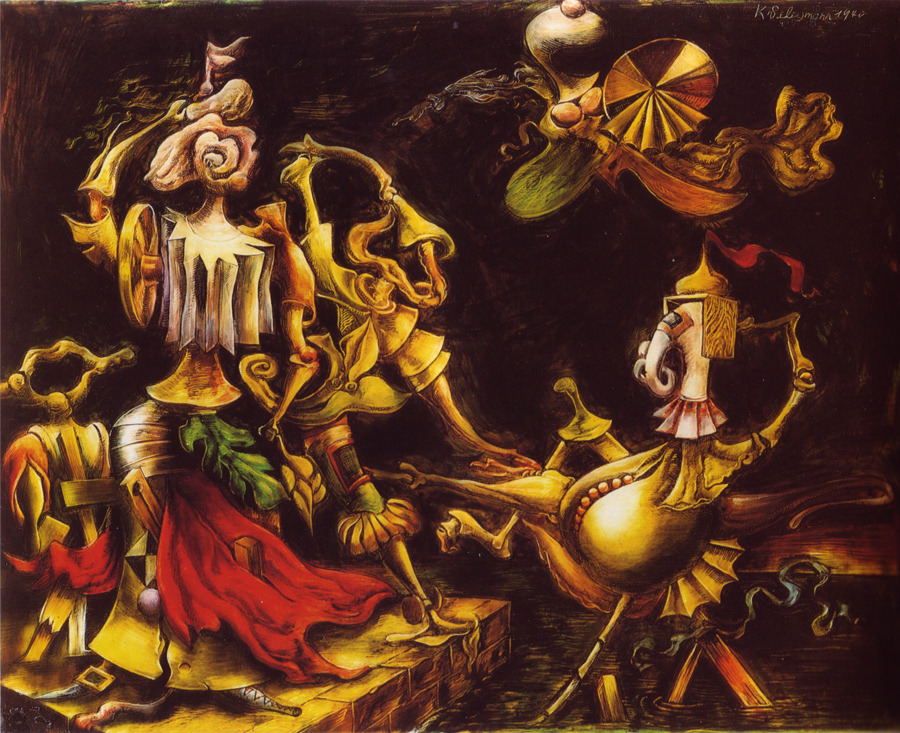
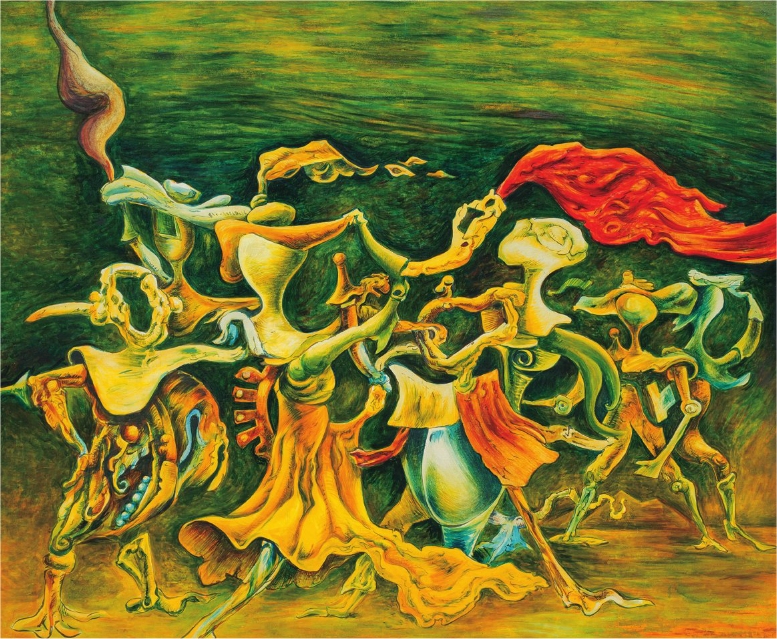
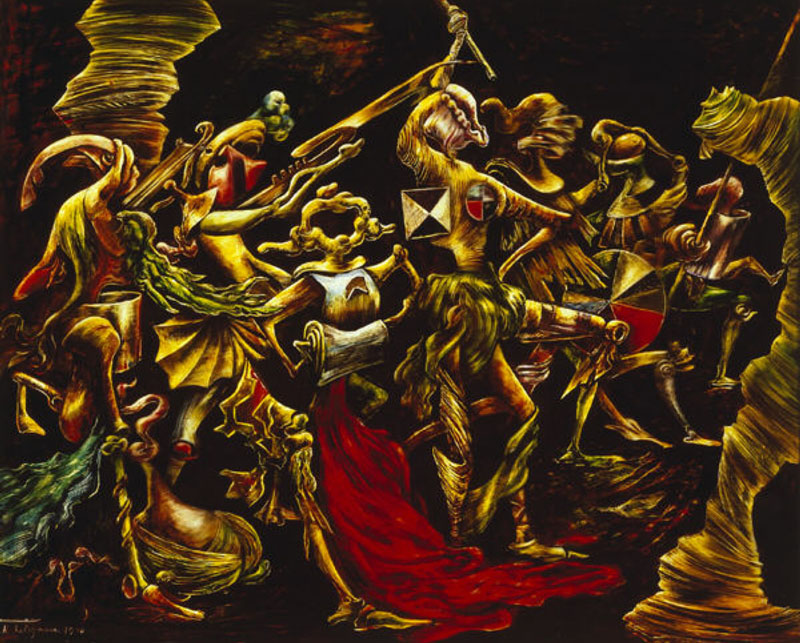
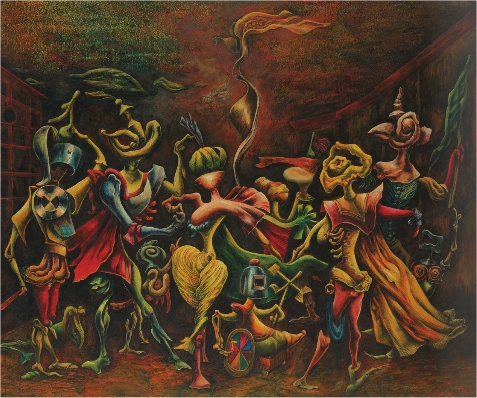
.jpg)
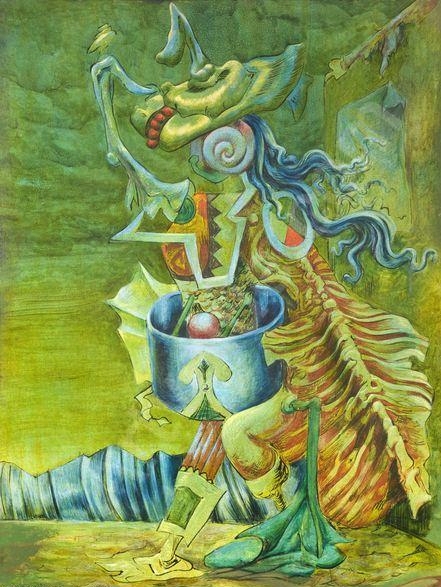
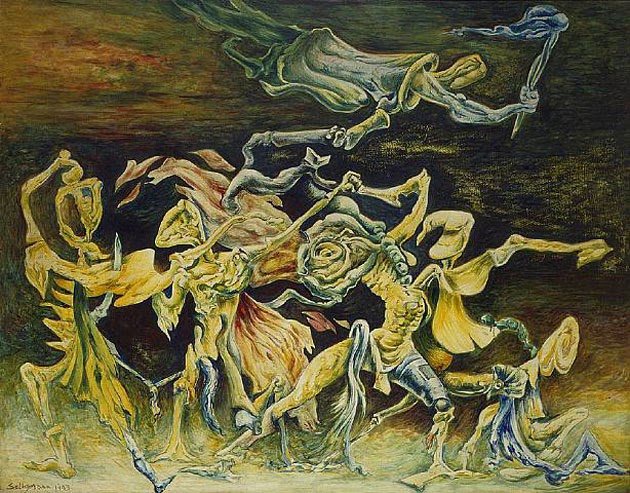
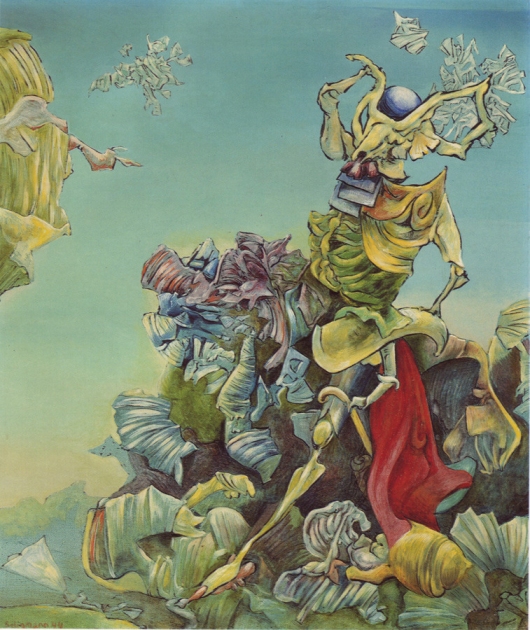

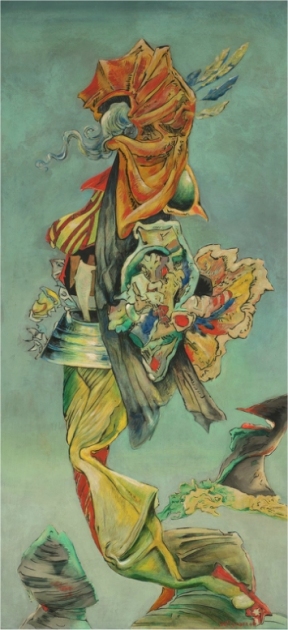
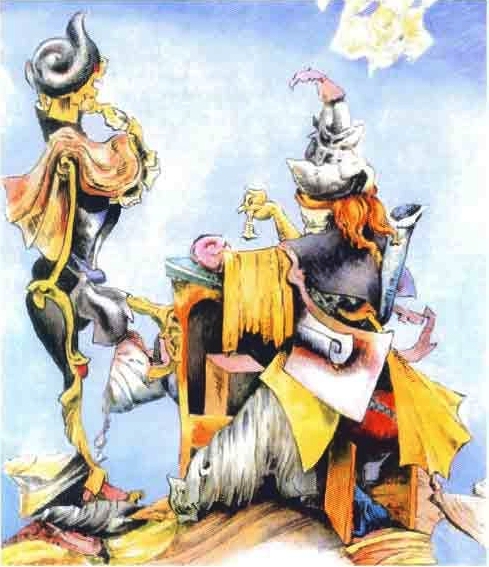
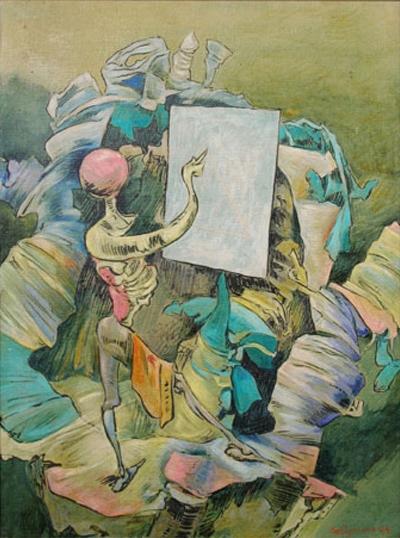
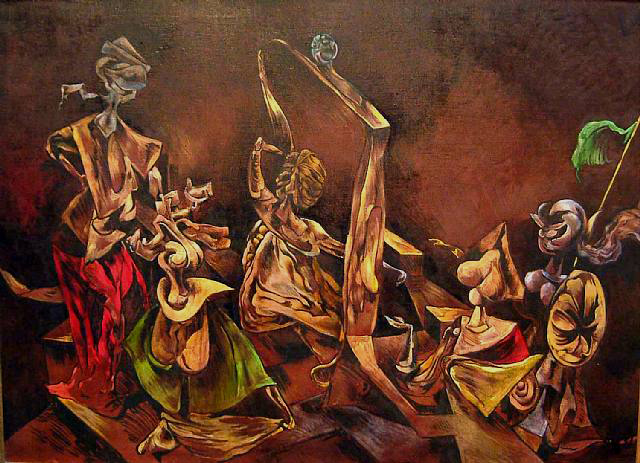
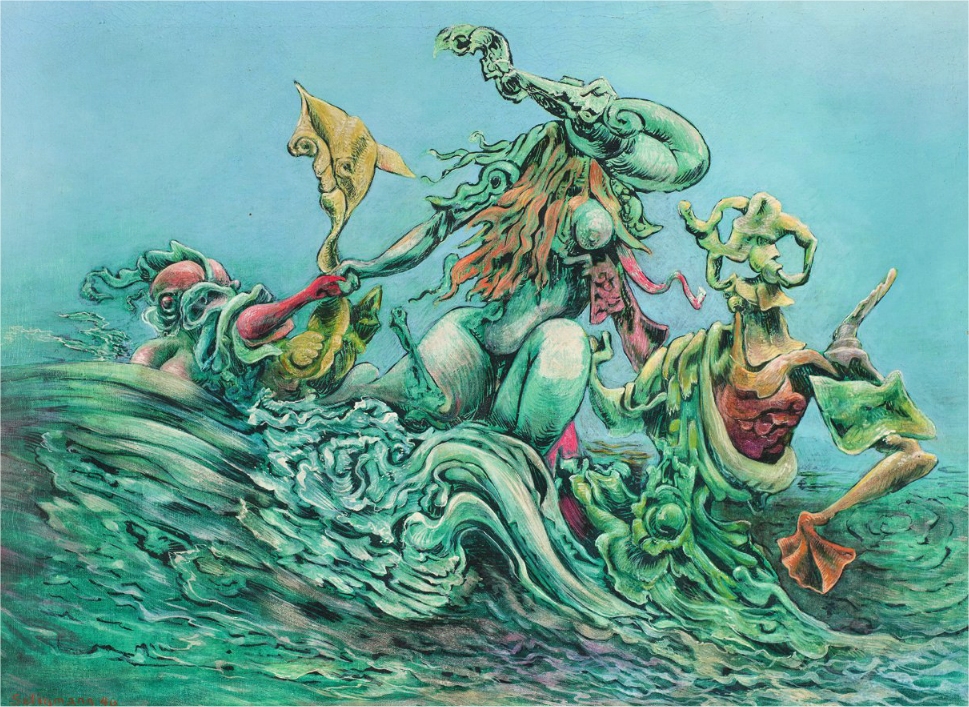
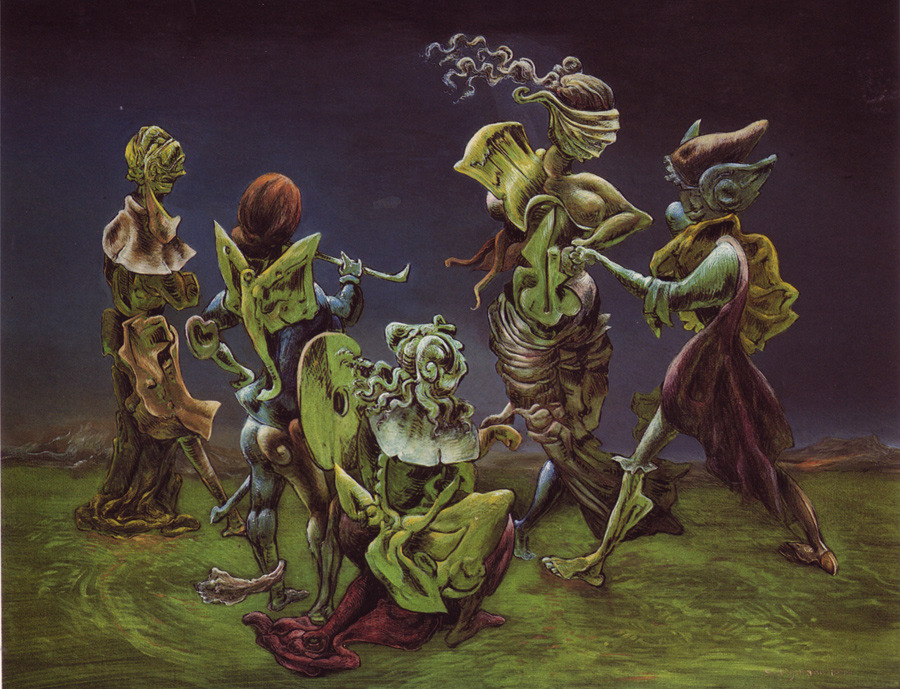
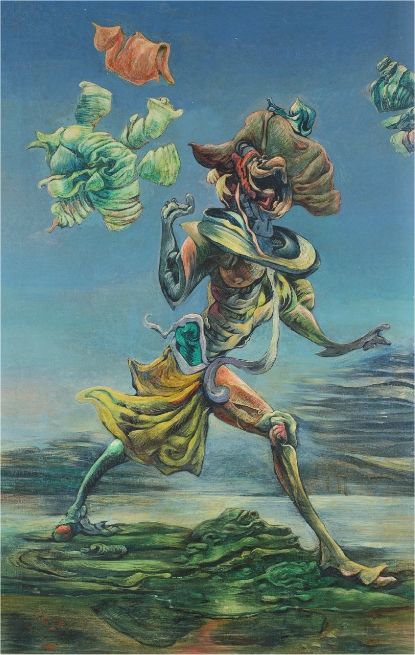
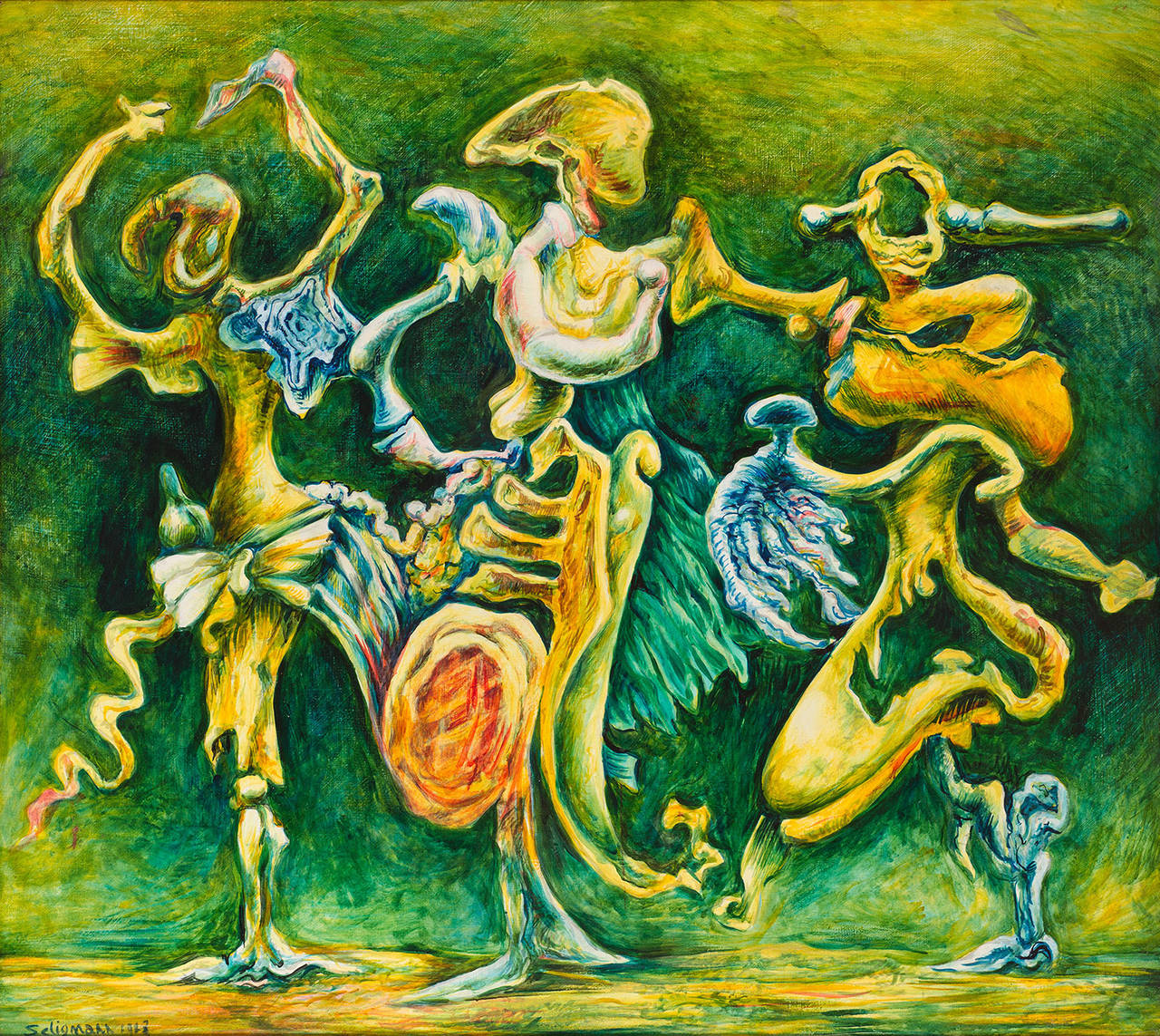
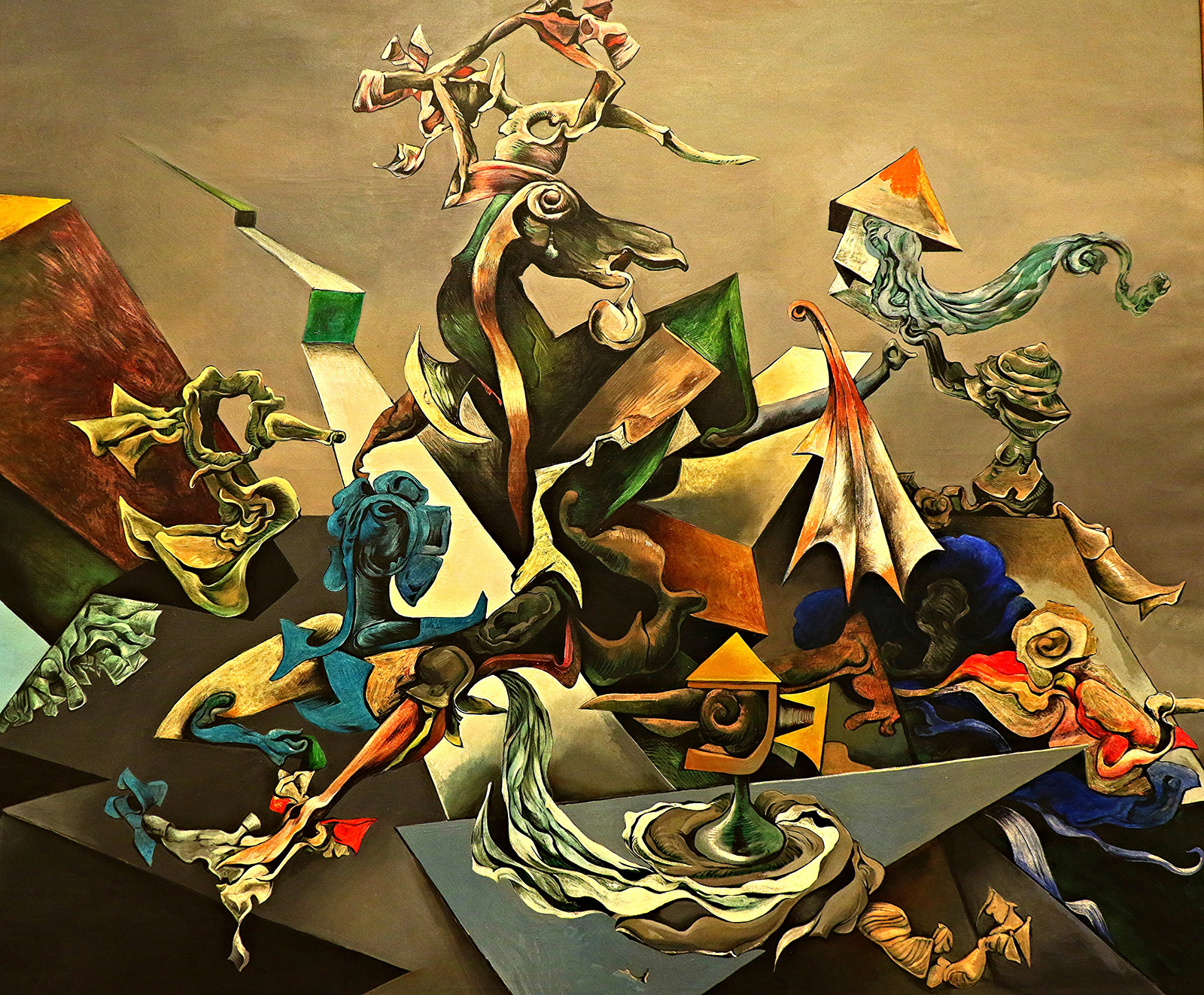
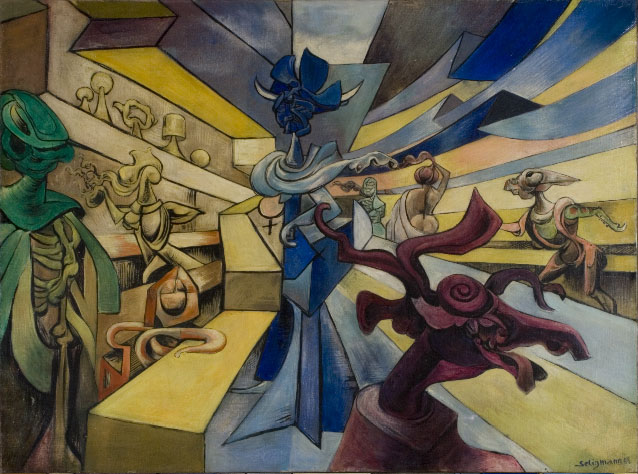
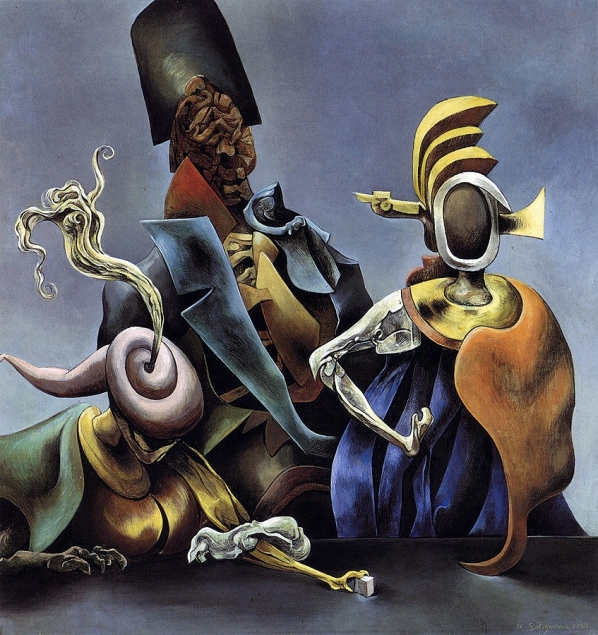
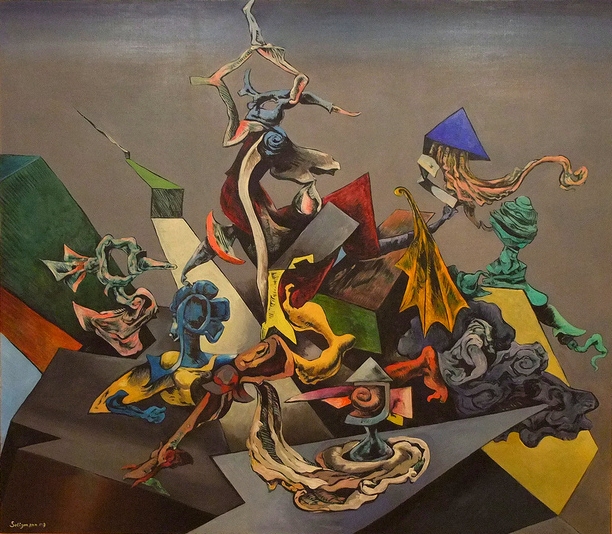
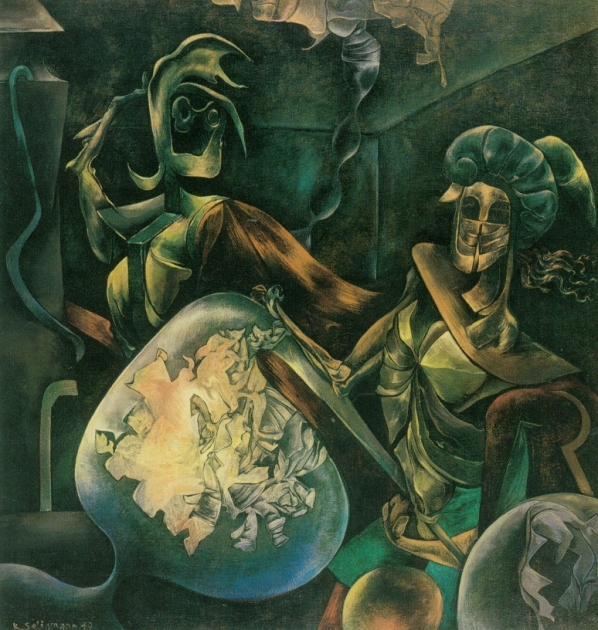
 A Mythical Trilogy III.jpg)
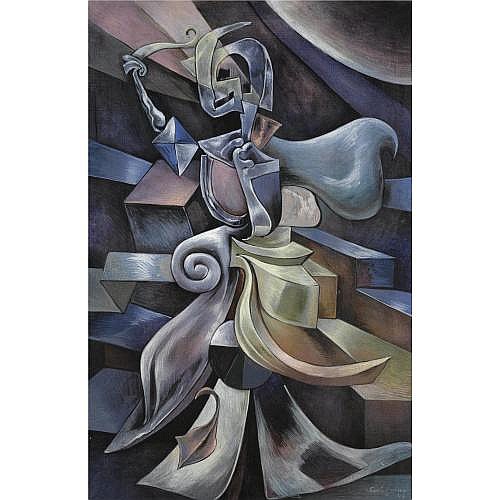
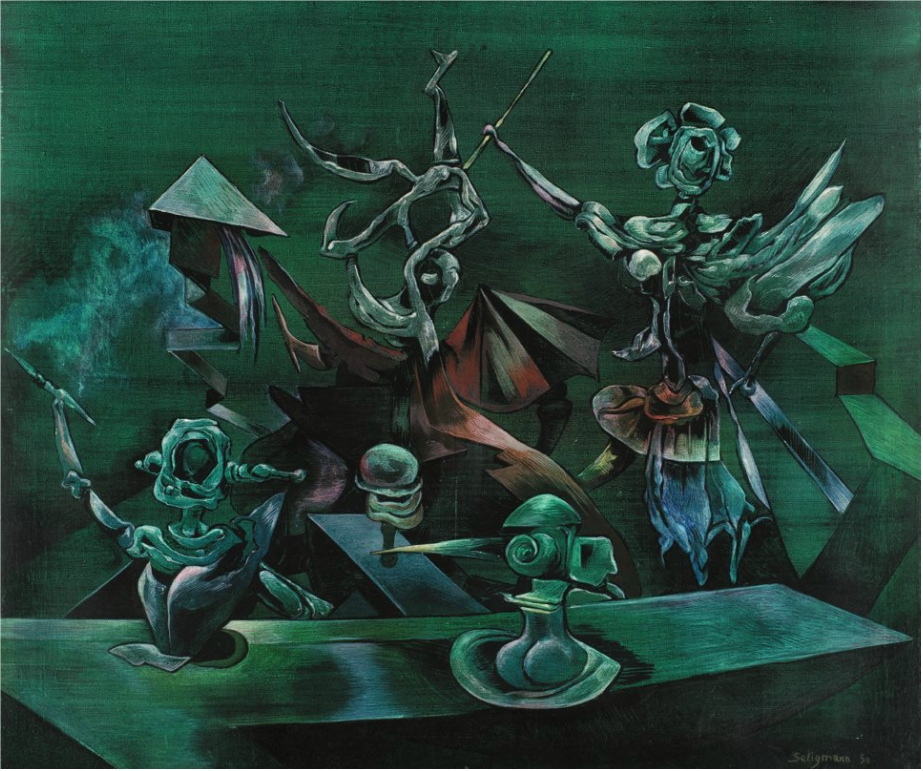
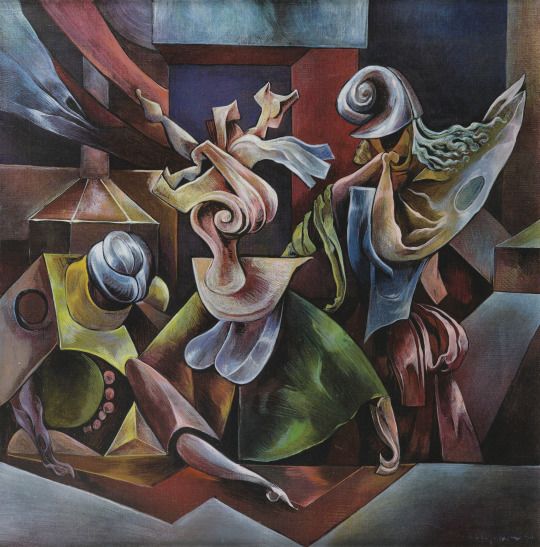
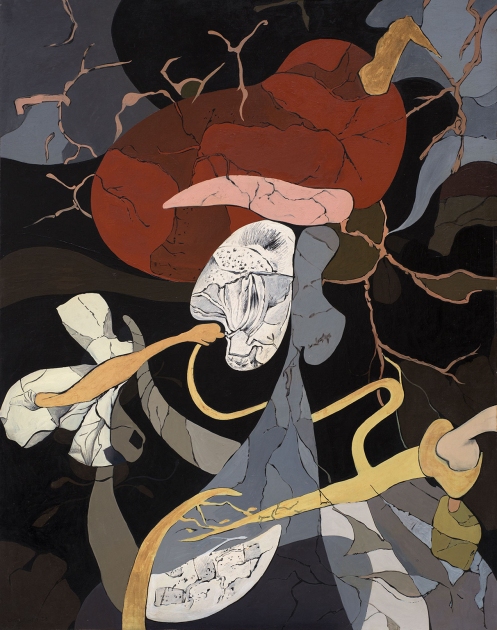
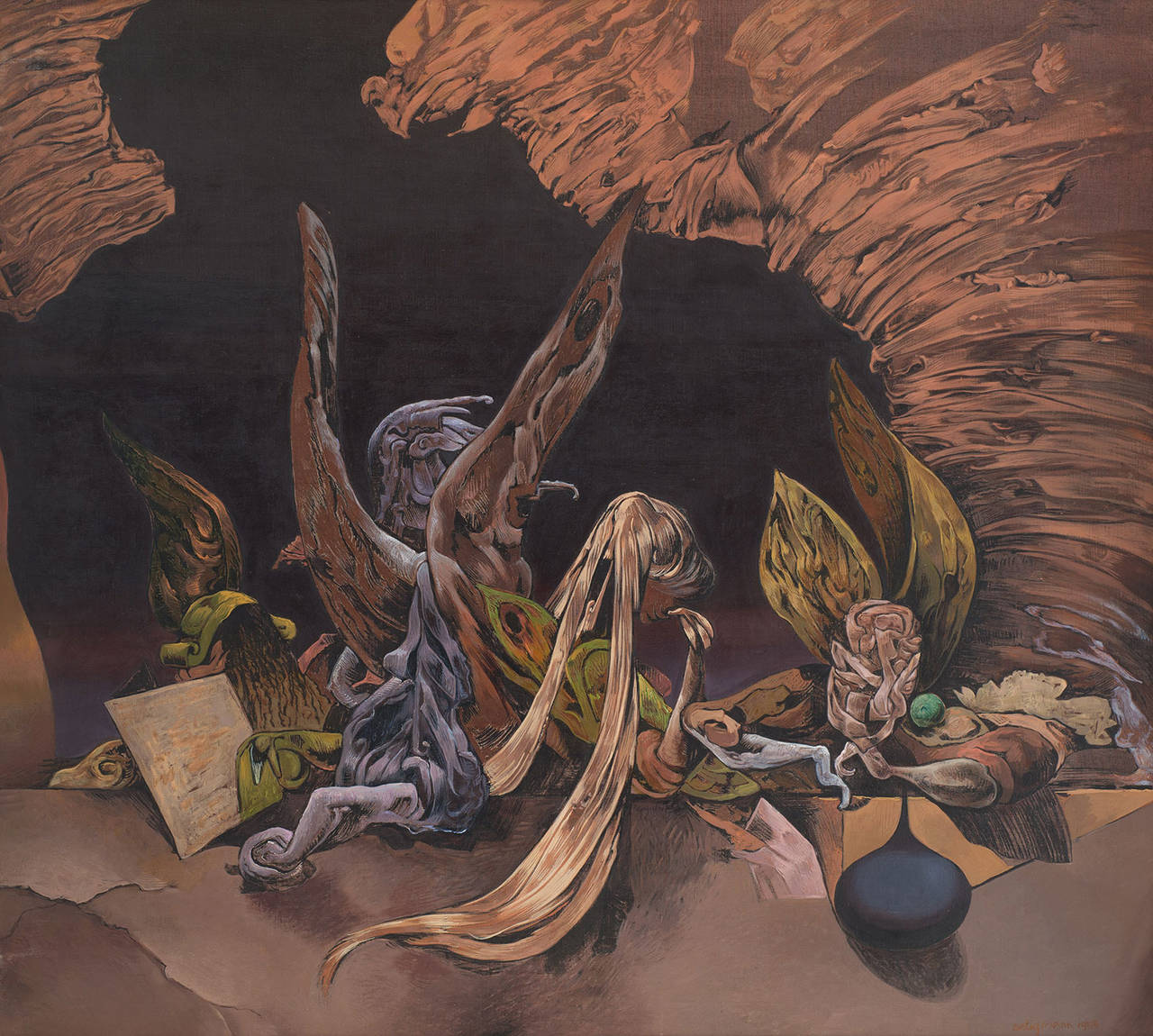
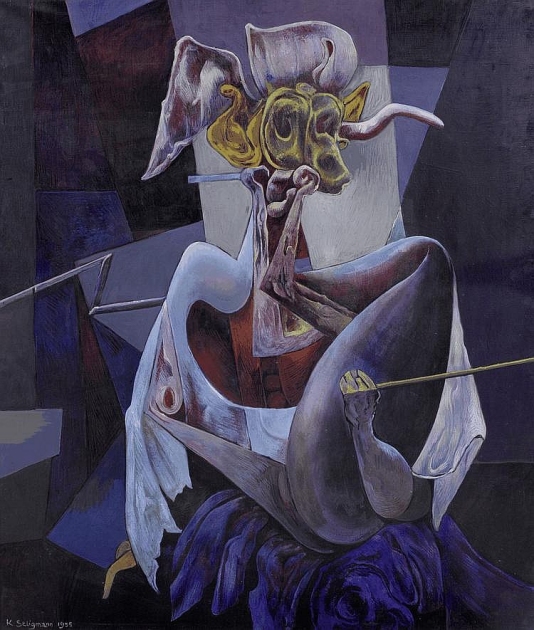
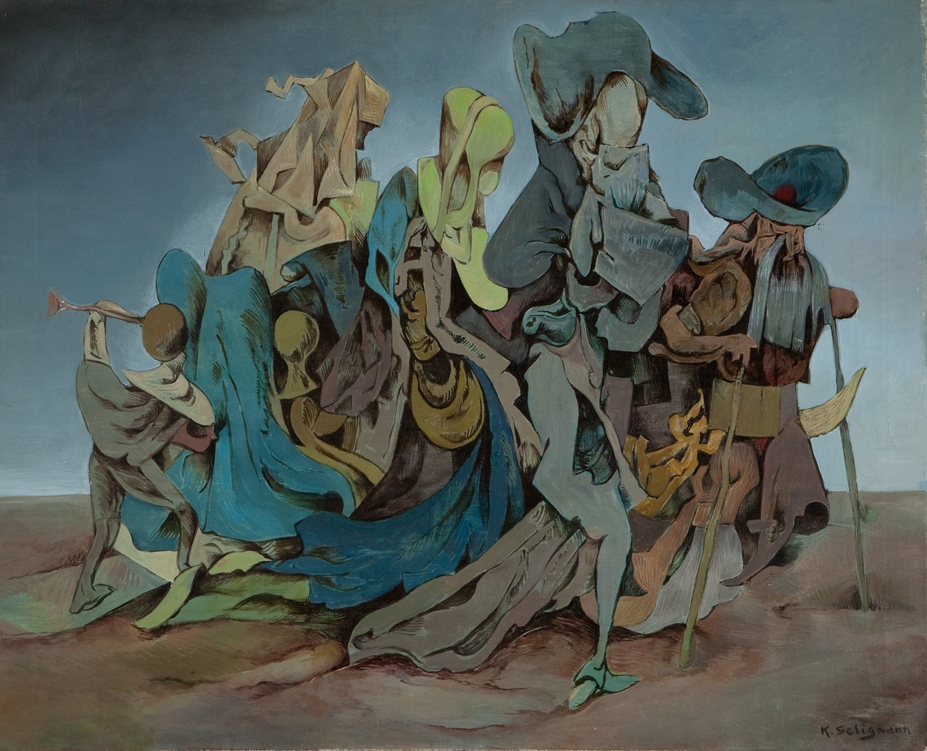
.jpg)


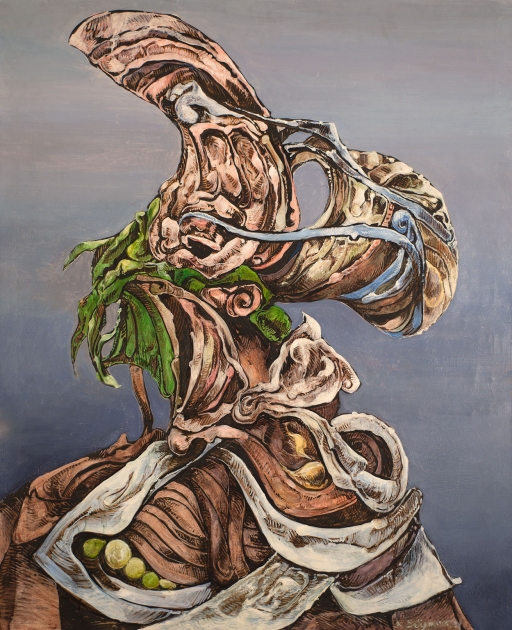
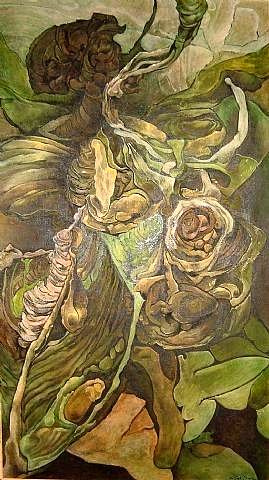
.jpeg)
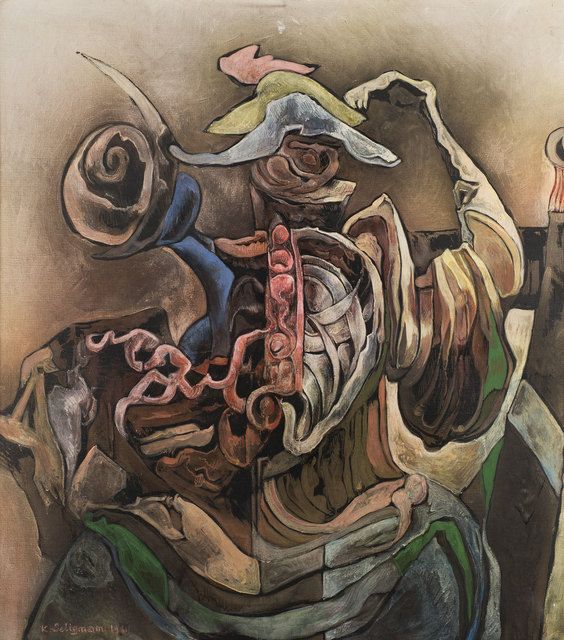













.jpeg)





.jpg)

















 A Mythical Trilogy III.jpg)







.jpg)




.jpeg)

 Swiss born Kurt Seligman began painting in the late 1920s. His initial style was abstract, often using flowing organic shapes. In 1937 he met with Breton and became a member of the Surrealist group.
Swiss born Kurt Seligman began painting in the late 1920s. His initial style was abstract, often using flowing organic shapes. In 1937 he met with Breton and became a member of the Surrealist group.